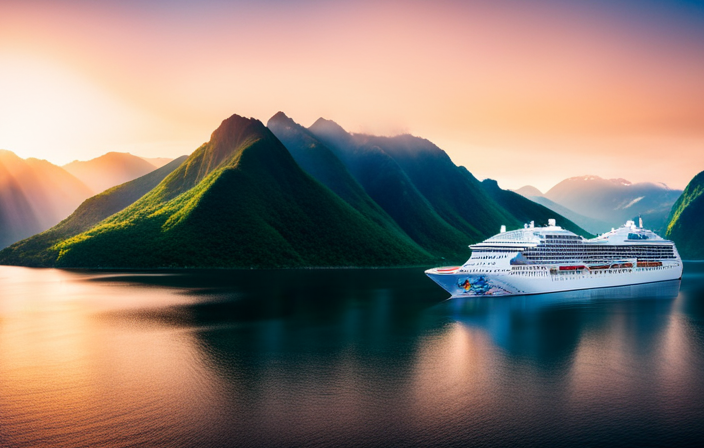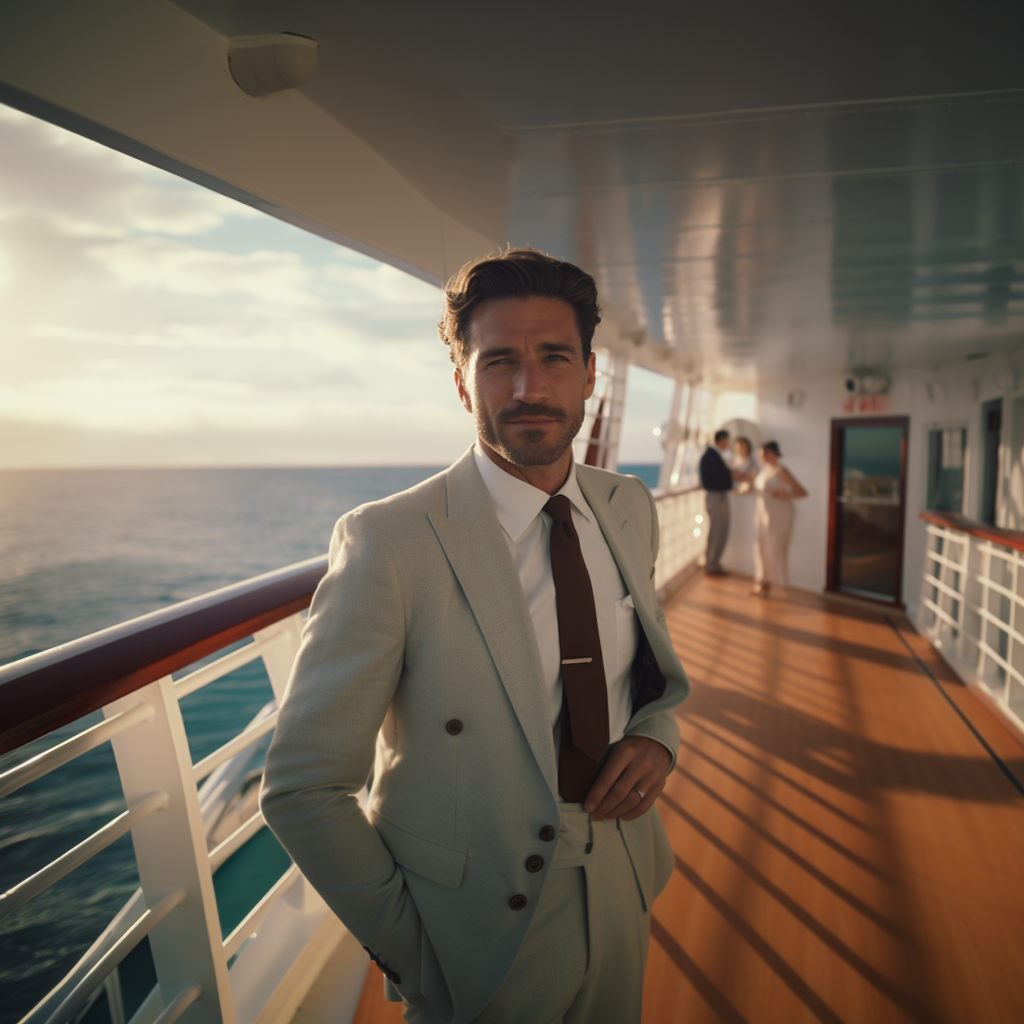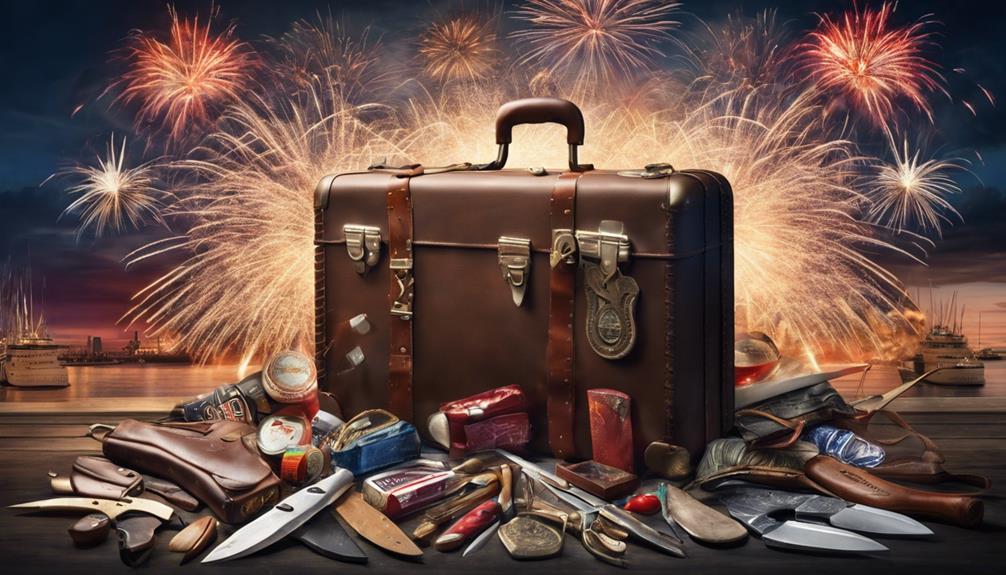Embarking on a journey through the immense sea of data, I find myself fascinated by a query that remains in the thoughts of numerous individuals: Who is the proprietor of Norwegian Cruise Lines?
In this article, we will embark on a journey to uncover the hidden treasures of ownership behind this renowned cruise company. With a rich history and a fleet that spans across the globe, Norwegian Cruise Lines has become a beacon of luxury and adventure for travelers far and wide.
But who holds the helm of this maritime empire? We will delve into the founders, explore their public ownership structure, and unveil the major shareholders who guide its course.
Additionally, we will navigate through partnerships and acquisitions that have shaped its evolution over time. Furthermore, we cannot ignore the impact of COVID-19 on Norwegian Cruise Lines’ ownership landscape.
Join me as we navigate through these waters to unravel the secrets behind who truly owns Norwegian Cruise Lines.
Key Takeaways
- Norwegian Cruise Lines is a publicly owned company listed on the New York Stock Exchange as NCLH, allowing anyone to buy shares and become a partial owner.
- Major shareholders of Norwegian Cruise Lines include Vanguard Group, BlackRock, and State Street Corporation, who have a strong influence over the company’s operations and strategy.
- The Board of Directors plays a crucial role in decision-making, overseeing management and performance, setting goals, monitoring financial performance, and approving compensation packages.
- The founders of Norwegian Cruise Lines, Knut Kloster and Ted Arison, had a vision for freedom and flexibility for passengers, which has translated into a commitment to innovation and expansion.
A Brief History of Norwegian Cruise Lines
The rich history of Norwegian Cruise Lines is fascinating, tracing back to its humble beginnings and the remarkable journey it has taken. One notable aspect of Norwegian Cruise Lines’ history is its commitment to environmental initiatives. The company has implemented various sustainability measures, such as reducing emissions, implementing advanced waste management systems, and investing in energy-efficient technologies. These initiatives not only demonstrate their dedication to preserving the environment but also position them as leaders in the cruise industry’s sustainability efforts.
Another significant aspect of Norwegian Cruise Lines’ history is the evolution of its fleet. Over the years, they have continuously upgraded their ships with state-of-the-art amenities and innovative designs. From their early vessels characterized by traditional cruise features to their more recent additions boasting luxurious accommodations and top-notch entertainment options, Norwegian Cruise Lines has consistently pushed boundaries to provide an exceptional cruising experience.
With this impressive background on Norwegian Cruise Lines’ environmental initiatives and fleet development, let’s now delve into the founders of Norwegian Cruise Lines and discover how they paved the way for this renowned cruise line’s success.
The Founders of Norwegian Cruise Lines
Imagine standing on the deck of a magnificent ship, surrounded by the salty breeze and the sound of waves crashing against its hull – this is where you’ll find the visionaries who brought Norwegian Cruise Lines to life. The founders of Norwegian Cruise Lines, Knut Kloster and Ted Arison, were driven by their passion for travel and their desire to create a unique cruising experience. Influenced by their early experiences in the shipping industry and their exposure to different cultures, they envisioned a cruise line that would offer freedom and flexibility to its passengers.
Today, Norwegian Cruise Lines is owned by a public company called Norwegian Cruise Line Holdings Ltd. This ownership structure allows shareholders from around the world to invest in the company and benefit from its success. With this transition into public ownership, Norwegian Cruise Lines has continued to innovate and expand its fleet, offering unforgettable experiences to travelers worldwide.
Now let’s delve into Norwegian Cruise Line’s public ownership structure without missing a beat.
Norwegian Cruise Lines’ Public Ownership
As a traveler looking to invest in an internationally renowned cruise line, it’s fascinating to explore Norwegian Cruise Lines’ public ownership structure and the opportunities it presents. Norwegian Cruise Lines (NCL) is a publicly traded company listed on the New York Stock Exchange under the ticker symbol NCLH. This means that anyone can buy shares of NCL and become a partial owner of the company. The table below provides some key information about NCL’s institutional ownership:
| Institution | Ownership |
|---|---|
| Vanguard Group | 11.34% |
| BlackRock | 10.87% |
| State Street Corporation | 7.23% |
These three institutions hold significant stakes in NCL, indicating their confidence in the company’s performance and growth potential. It’s worth noting that while these institutions are major shareholders, there are also numerous individual investors who own shares of NCL. Understanding NCL’s institutional ownership can provide valuable insights into its stability and long-term prospects as a cruise line investment option.
Moving forward, let’s delve into the major shareholders of Norwegian Cruise Lines to gain further understanding of the company’s ownership landscape.
Major Shareholders of Norwegian Cruise Lines
With their significant stakes in NCL, Vanguard Group, BlackRock, and State Street Corporation have solidified themselves as the pillars supporting Norwegian Cruise Lines’ ownership structure. These major investors play a crucial role in shaping the company’s direction and financial decisions. Their stock ownership grants them a strong influence over the cruise line’s operations and strategy.
The first sub-list shows that these major shareholders have a vested interest in NCL’s success.
The second sub-list emphasizes their power to shape the company’s policies.
The third sub-list highlights how their decisions can impact employees and stakeholders.
These major shareholders hold immense power within Norwegian Cruise Lines, making it essential for them to act responsibly and ethically. They must consider the long-term sustainability of the company while maximizing shareholder value.
As we delve into the role of the board of directors, we will explore how they work alongside these influential investors to guide NCL towards future growth and success.
The Role of the Board of Directors
The board of directors at Norwegian Cruise Lines plays a pivotal role in shaping the company’s strategic direction and ensuring its long-term success. As key decision-makers, board members are responsible for overseeing the overall management and performance of the company, including major decisions such as mergers, acquisitions, and capital investments. They provide guidance and expertise to the executive team, helping to set goals and objectives that align with the company’s vision. Additionally, board members have a fiduciary duty to act in the best interest of shareholders by monitoring financial performance and risk management strategies. The table below summarizes some key functions of board members:
| Role | Responsibilities |
|---|---|
| Strategic planning | Setting long-term goals and objectives |
| Risk oversight | Monitoring potential risks and developing mitigation plans |
| Executive compensation | Approving compensation packages for top executives |
| Performance evaluation | Assessing executive performance against targets |
With their extensive experience and diverse backgrounds, board members bring valuable perspectives to the decision-making process at Norwegian Cruise Lines. They work closely with the management and leadership team to drive innovation, foster growth, and ensure accountability throughout the organization.
Moving on to the subsequent section about ‘management and leadership team of Norwegian Cruise Lines’…
Management and Leadership Team of Norwegian Cruise Lines
The management and leadership team at Norwegian Cruise Lines is composed of experienced individuals who are responsible for guiding the company’s operations and ensuring its success. They have implemented a management structure that allows for efficient decision-making and effective communication throughout the organization.
The leadership style within Norwegian Cruise Lines emphasizes collaboration, innovation, and a customer-centric approach. This ensures that all employees are aligned with the company’s vision and goals, working together to deliver exceptional experiences to their guests.
- Regular team meetings foster open dialogue and idea sharing
- Transparent communication channels promote trust and accountability
- Ongoing training and development programs empower employees to grow professionally
- Strong emphasis on employee engagement encourages a positive work environment
With this strong management structure in place, Norwegian Cruise Lines has been able to establish successful partnerships and make strategic acquisitions in order to expand its reach in the cruise industry.
Partnerships and Acquisitions by Norwegian Cruise Lines
Norwegian Cruise Lines has formed strategic alliances and acquired other companies, expanding its presence in the cruise industry. The company actively seeks partnership opportunities to enhance its offerings and provide unique experiences for customers. Through competitor analysis, Norwegian Cruise Lines identifies potential partners that bring complementary strengths and resources to the table.
By collaborating with these partners, the company taps into new markets and attracts a wider range of customers.
In addition to partnerships, Norwegian Cruise Lines has also made strategic acquisitions to strengthen its position in the industry. These acquisitions have allowed the company to diversify its product portfolio and expand its fleet of ships. By acquiring established cruise lines or smaller companies with niche market appeal, Norwegian Cruise Lines capitalizes on emerging trends and attracts a broader customer base.
Transitioning into the subsequent section about financial performance and revenue sources, it is important to understand how these partnerships and acquisitions have impacted Norwegian Cruise Lines’ overall business strategy.
Financial Performance and Revenue Sources
After exploring the various partnerships and acquisitions made by Norwegian Cruise Lines, it is important to delve into their financial performance and revenue sources. Understanding how the company generates revenue and its overall financial health can provide valuable insights into its operations.
Norwegian Cruise Lines has consistently reported strong financial performance, with steady revenue growth over the years. Their primary revenue sources come from ticket sales for cruises, onboard merchandise sales, as well as food and beverage services. Additionally, they also generate income from ancillary services such as shore excursions and spa treatments. This diversified revenue stream has contributed to their success in the industry.
However, it is crucial to examine how these financial factors have been affected by the unprecedented impact of COVID-19 on Norwegian Cruise Lines’ ownership.
Impact of COVID-19 on Norwegian Cruise Lines’ Ownership
Amidst the stormy seas of the COVID-19 pandemic, Norwegian Cruise Lines’ ownership faced a turbulent journey. The impact on stock prices was significant, as investors grew wary of the uncertain future for the cruise industry. Stock values plummeted, causing financial strain for the company and its shareholders.
To weather this storm, Norwegian Cruise Lines sought government bailouts to secure much-needed funding and avoid bankruptcy. These bailouts provided some relief but also raised questions about the long-term sustainability of the company’s ownership structure.
As we navigate through these challenging times, it is crucial to assess how Norwegian Cruise Lines will emerge from this crisis and what steps they will take to ensure future growth and expansion plans remain intact.
Transitioning into the subsequent section about ‘future outlook and expansion plans for Norwegian Cruise Lines’, it is vital to consider their strategies moving forward amidst an unpredictable market environment.
Future Outlook and Expansion Plans for Norwegian Cruise Lines
Prepare yourself for an exhilarating journey into the future of cruising, where boundless possibilities and thrilling adventures await.
As Norwegian Cruise Lines navigates through the challenges posed by COVID-19, it is also strategizing for its expansion and growth in the coming years. The company aims to overcome future challenges by focusing on innovative technologies, enhanced safety measures, and sustainable practices.
A key aspect of their strategy involves conducting competitor analysis to stay ahead in the market. By closely studying industry trends, customer preferences, and emerging players, Norwegian Cruise Lines can identify opportunities for improvement and differentiation.
This comprehensive approach ensures that they continue to provide exceptional experiences to their guests while maintaining a competitive edge in the industry.
With a commitment to constant innovation and a deep understanding of their competitors’ strategies, Norwegian Cruise Lines is well-positioned for success as they chart their course into the future.
Frequently Asked Questions
How many ships does Norwegian Cruise Lines currently own?
Norwegian Cruise Lines currently owns 28 ships, making it one of the largest cruise line companies in the world. With an average cost of $1 billion per ship, this publicly traded company dominates the industry.
What is the average cost of a Norwegian Cruise Lines vacation?
The average cost of a Norwegian Cruise Lines vacation varies depending on factors such as destination, duration, and cabin type. Prices can range from a few hundred to several thousand dollars per person.
Is Norwegian Cruise Lines a publicly traded company?
Yes, Norwegian Cruise Lines Holdings (NCLH) is a publicly traded company. It is listed on the New York Stock Exchange under the ticker symbol NCLH. The ownership structure of Norwegian Cruise Lines includes various institutional and individual shareholders.
How has the COVID-19 pandemic affected Norwegian Cruise Lines’ ownership structure?
The Covid-19 pandemic wreaked havoc on Norwegian Cruise Lines, causing such a tremor in their ownership structure that it felt like a seismic shift. Stock prices plummeted and leadership underwent significant changes.
Are there any plans for Norwegian Cruise Lines to expand its fleet in the near future?
Yes, Norwegian Cruise Lines has plans for international expansion and is actively seeking to grow its fleet. In addition, the company is committed to sustainability initiatives, which may impact its future growth strategy.
Conclusion
In conclusion, Norwegian Cruise Lines has a rich history and is currently publicly owned. Major shareholders play a significant role in the company’s governance. Despite facing challenges due to the impact of COVID-19, Norwegian Cruise Lines remains focused on future expansion plans.
Like a ship sailing through stormy waters, the company aims to weather the current challenges and set sail towards new horizons. With strategic partnerships and acquisitions, Norwegian Cruise Lines continues to navigate its way towards success in the cruise industry.
Alfons is the visionary leader and driving force behind Voyager Info’s success. As the Editor in Chief, he brings a wealth of experience and an unwavering passion for travel to the helm of our cruise-centric platform.
With a lifelong fascination for exploring new horizons, Alfons discovered his love for the ocean and cruising at a young age. From sailing across pristine Caribbean waters to embarking on daring expeditions to far-flung destinations, he has amassed a treasure trove of first-hand experiences in the world of cruising.











